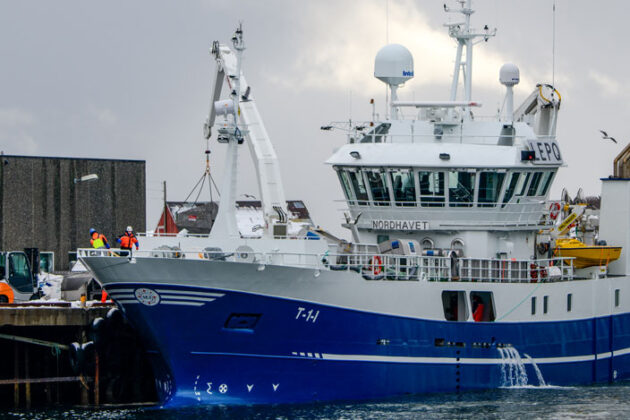Norwegian fisheries provide value creation amounting to NOK 22.7 billion

Norwegian fisheries provide significant value creation. Analyses indicate that the fishing industry generated a net value creation of NOK 22.7 billion in 2019. Of this, NOK 16.6 billion was created directly from fisheries, while NOK 6.1 billion comes from ripple effects in the supply industry.
“We have estimated the amount of corporation tax and personal tax on general income that is supported by seafood industry activity. The total effects of taxation in 2019 amount to NOK 5.1 billion. Of this, 4.0 billion went straight to the state”, said Nofima researchers Roy Robertsen and Audun Iversen.
Together with the analysis company Menon Economics, they are responsible for the report.
The report states that NOK 830 million is corporation tax paid by the fleet, while NOK 570 million comes from supply companies. Personal tax on general income amounts to NOK 1.6 billion, while the remaining NOK 2.1 billion comes from other items such as national insurance contributions, bracket tax and employer’s national insurance contributions.
This is the first time that Nofima and Menon have carried out such a thorough in-depth analysis of the fishing industry. The researchers have looked at individual counties and municipalities.
Surprised
“It surprised us that the indirect effects of employment in the fishing industry are so large in Oslo and Viken county and small in the northern Norwegian counties”, say Robertsen and Iversen.
They believe some of the explanation for this lies in the fact that many insurance, legal and fuel services are provided by companies that are located in or around the capital.
It is positive that value creation is so high per employee. Each employed person in the industry contributes to a value creation of NOK 1.7 million, which is 63% higher compared to other industries.
The significance of fisheries regarding settlement and business development is important for many municipalities. Fishery companies are largely concentrated in Northern and Western Norway, meaning the overall ripple effects are greatest in these regions. Overall employment is highest in Møre og Romsdal with 3493 employees. Vestland then follows with 2733 employees ahead of Troms and Finnmark with 2598 employees, and Nordland with 2114 employees.
The report shows the figures for each municipality and each county.
The ripple-effect report, commissioned by the Norwegian Seafood Research Fund (FHF), shows that the number of fishermen has remained stable over the past four to five years after a sharp decline from 1995 to 2015. There are almost 9100 people whose main occupation is fishing, of which 311 are women. In addition, there are 1400 people whose secondary occupation is fishing. If one includes the supply industry, there are 15,500 people employed in the industry.

